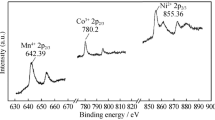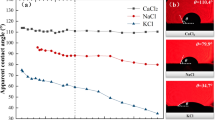Abstract
A new method of recovering chlorine from by-product hydrogen chloride is proposed and developed. According to the reaction Me+2HC1 = MeCl2+Ho (Me = Metal) hydrogen chloride is reduced to give hydrogen and metal chloride. Gaseous hydrogen was drawn out from the reaction system and the metal chloride dissolved in the electrolyte, where it was electrolysed to give chlorine and metal using molten metal as a cathode. The metal was recovered on the cathode in a molten state and reused for the former reaction. Bench scale tests were also carried out, where zinc was used as a molten metal cathode and the cell capacity was about 50 A. The cell voltage was 6.5 V at 50 A (working temperature 560°C, distance between anode and cathode 5 mm) and in this case, the ohmic loss was about 70%. The current efficiency was about 90% (anodic current density 200 A/dm2) when the working temperature was 500°C and electrode distance between anode and cathode was 18 mm.
This method seems very promising on the basis of the above-mentioned data.
Similar content being viewed by others
Author information
Authors and Affiliations
Rights and permissions
About this article
Cite this article
Yoshizawa, S., Takehara, A., Ito, Y. et al. The recovery of chlorine from by-product hydrogen chloride Part 2: Molten metal cathode method. J Appl Electrochem 1, 253–259 (1971). https://doi.org/10.1007/BF00688646
Received:
Issue Date:
DOI: https://doi.org/10.1007/BF00688646




